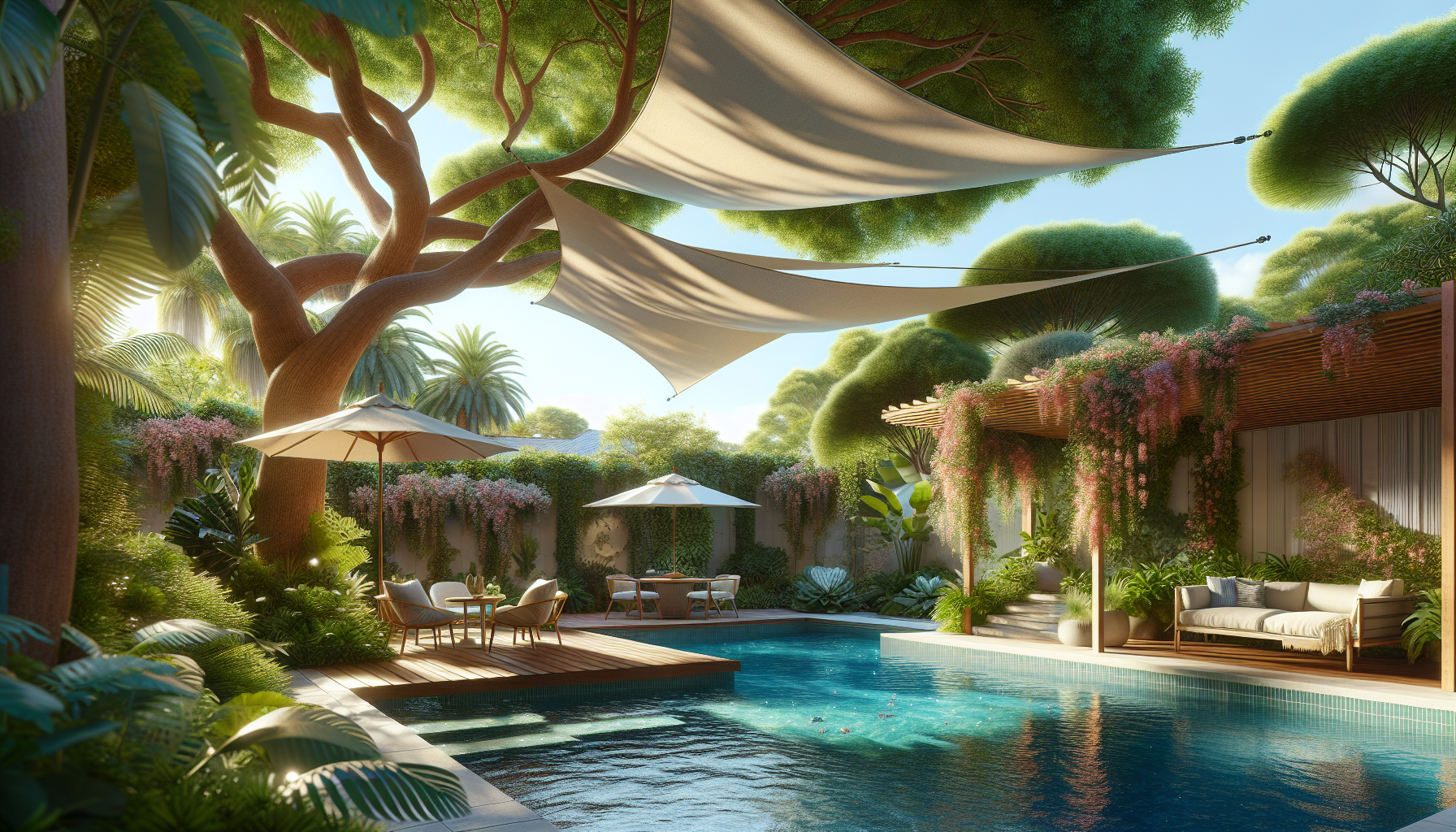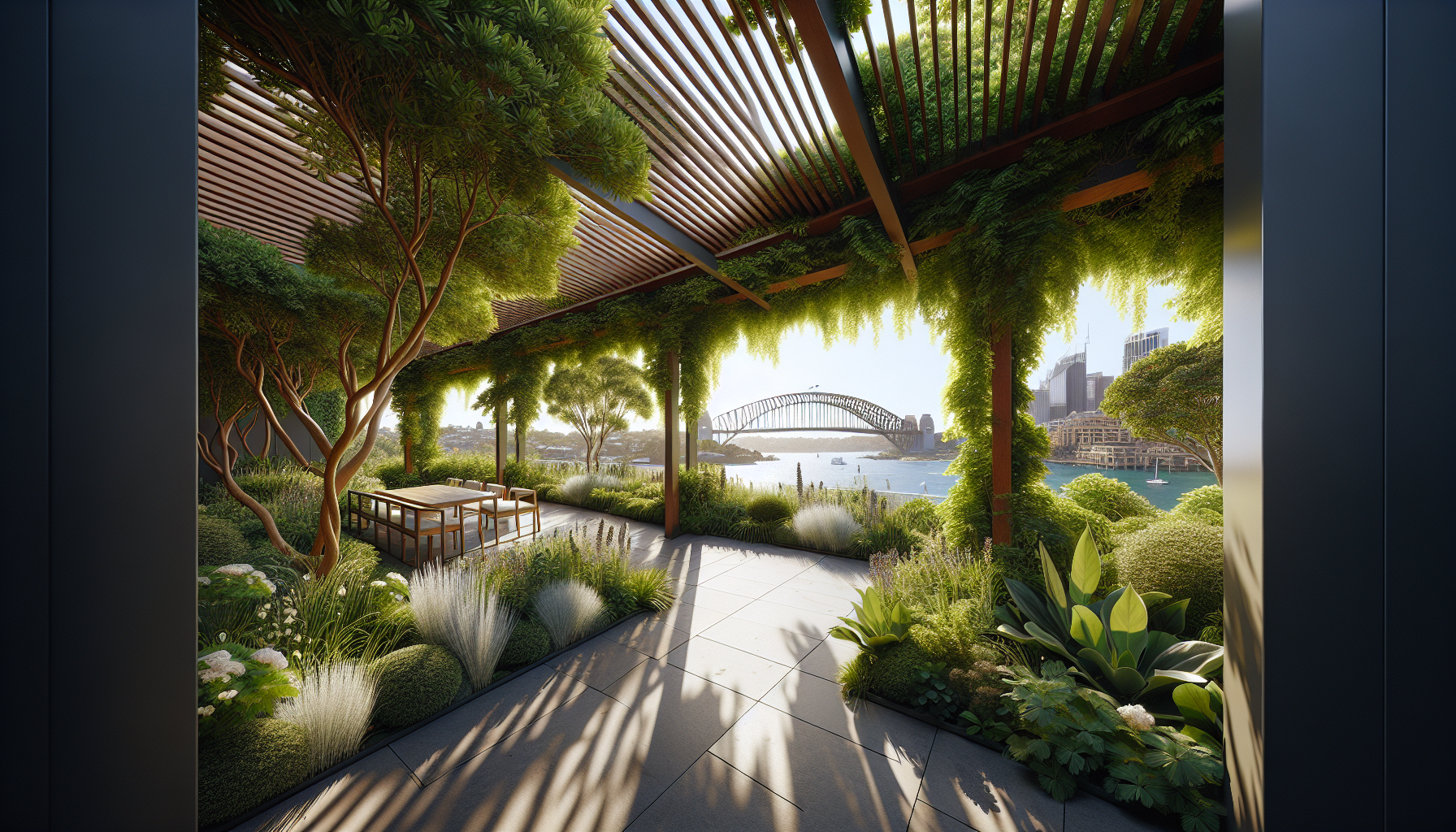The Benefits of Installing a Pergola Over Your Pool
Adding a pergola over your pool area not only enhances your outdoor space’s aesthetics but also brings several functional advantages. When considering ways to elevate your backyard oasis, it’s important to consider the multifaceted benefits of a pergola. One of the primary attractions is the creation of a shaded sanctuary. The lattice roof of a pergola provides a barrier against the sun’s harsh rays, allowing swimmers and loungers alike to enjoy the water without the risk of overexposure. This shaded space enables extended relaxation by the poolside, even during the peak sun hours, ensuring your comfort and health are kept in check.
Beyond shade, a pergola serves as a framework for additional ambiance and decor. Ornamental vines or string lights can be intertwined among the beams, promoting natural greenery or a twinkling twilight vibe. Such embellishments transform your pool area into a scenic landscape and extend the pool’s usability into the evening. As a result, your pool area transitions seamlessly from a refreshing daytime retreat to a romantic evening backdrop, enhancing the emotional and aesthetic value of your experience.
Improved Privacy and Wind Protection
Another compelling argument for installing a pergola is its added privacy and wind protection. A strategically placed pergola can serve as a natural privacy screen, shielding your pool from the view of neighbors or passersby. By curating a selection of climbing plants or installing draperies along the edges of the pergola, you can cultivate a secluded haven that feels exclusive and secure. Moreover, it can act as a windbreak, especially important in open or breezy areas, ensuring that your relaxation time remains uninterrupted by gusts that could otherwise cool the water and surrounding area.
When assessing the value addition to your property, a pergola stands out as a worthwhile investment. It not only enhances your pool’s current usability but also increases your property’s overall appeal and value. Prospective homebuyers often look for unique features that blend practicality and luxury—qualities that a pergola encapsulates. The visual allure and practical perks of having a pergola might be the standout elements that differentiate your property in the competitive real estate market.
Design Ideas for Integrating a Pergola Over Pool in Your Backyard Oasis
Integrating a pergola over your pool can transform your backyard into a luxurious getaway, enticingly blending form and function. Picture lounging in the cool shade of a stylish pergola while the water shimmers beneath you—a perfect retreat from the summer heat. When considering design ideas for your pergola, it’s crucial to consider the material and its endurance against weather elements. Wooden pergolas bring a classic, organic feel, while aluminum and vinyl offer modern aesthetics and less maintenance. Whichever you choose, ensure it complements your outdoor space’s existing design and palette.
Another focal point is the pergola’s architecture and its symbiosis with the pool. A popular design approach is to mirror the pool’s shape with the pergola, creating a cohesive visual flow. This means erecting a similarly shaped pergola for rectangular pools that echoes the pool’s linear form. Curved pools, on the other hand, pair wonderfully with an arching pergola that curves around the pool’s perimeter, offering a unique and inviting shelter.
Consider also the integration of flora around your pergola. Adding climbing vines or hanging plants can produce a verdant living roof, enhancing the feeling of a natural oasis. Incorporating outdoor lighting fixtures into the design allows the pergola to provide a warm glow in the evenings, extending the hours of enjoyment beside your illuminated pool. Strategically placed LEDs or soft pendant lights can transform the area into an enchanting night-time retreat.
Finally, adding curtains or retractable canopies provides adjustable shade and privacy, allowing for a customizable sanctuary. Whether opting for breezy sheer curtains to catch the gentle wind or selecting heavier drapes for more seclusion, these aspects can substantially enrich the comfort and serenity of your poolside pergola. It’s not just about creating shade; it’s about designing a versatile space that adapts to your needs, ensuring your backyard remains your favorite escape.
Choosing the Right Materials for Your Poolside Pergola
When adding aesthetic and functional value to your pool area, constructing a pergola can prove to be a transformative decision. However, picking suitable materials for your poolside pergola is crucial, as it affects not only the durability and maintenance of the structure but also the overall ambiance of your outdoor space. Considering factors such as weather resistance, ease of upkeep, and harmony with your existing landscape is essential.
Durability and Weather Resistance
Exposure to elements like the sun, rain, and possibly chlorine can significantly impact the lifespan of your pergola. Materials such as pressure-treated wood, vinyl, and aluminum are popular choices due to their resistance to decay and rot. Pressure-treated wood offers a traditional look with the added benefit of a chemical treatment that protects it against the elements. Conversely, vinyl provides a clean, modern appearance and requires little maintenance, while aluminum is both lightweight and strong, resistant to rust, and can be powder-coated for extra durability.
Maintenance Requirements
Your choice of material also influences the ongoing maintenance the pergola will require. If low maintenance is a priority, composite materials are ideal, as they mimic the look of wood without needing regular staining or sealing. For those preferring the natural warmth of wood, species like cedar and redwood naturally resist moisture and insects, making them more enduring with a bit more upkeep. Always consider the balance between the look you wish to achieve and the time you are willing to spend on maintenance.
Visual Appeal and Compatibility
The aesthetic aspect of your pergola should complement your home and poolside theme. Whether it’s the rustic charm of timber or the sleek finish of metal, the material you choose contributes to the visual cohesion of your space. When selecting the material, consider the colors, textures, and design complexities that will harmonize with your existing structures and landscaping. Integrating features such as lighting and climbing plants can enhance the ambiance of your poolside retreat and encourage a seamless transition between the comfort of your home and the natural beauty of the outdoors.
Step-by-Step Guide to Building a Pergola Over Your Pool
Transforming your poolside into a serene oasis is just a project away. A pergola isn’t merely an aesthetic addition; it’s a functional enhancement that provides shade and ambiance. Whether you’re a DIY enthusiast or planning to hire professionals, understanding the steps involved in constructing a pergola over your pool is essential. Let’s dive into the process so your backyard can soon boast this beautiful structure.
Initial Planning and Preparation
Before you bring out the toolbox, the foundation of your pergola project lies in careful planning. Begin by assessing your pool area to decide the dimensions of your pergola. Consider the sun’s path, the size of your outdoor furniture, and the desired level of shade. Consider local building codes to ensure compliance, particularly for structures built close to water. Once the specifics are pinned down, it’s crucial to choose materials that are both durable and harmonize with your existing pool design—a popular choice being weather-resistant wood or aluminum.
Setting the Posts
The cornerstone of your pergola will be its posts, which support the weight of the beams and rafters. Regardless of your choice of materials, use a post level to ensure your posts are perfectly vertical. Begin by marking the post locations around your pool and then dig post holes to the recommended depth for your area’s frost line. When setting the posts, using a concrete anchor to stabilize them is advantageous. This foundation must be sturdy and precise, as the equilibrium of your entire structure depends on it.
Assembling the Canopy Frame
With your posts securely in place, it’s time to assemble the overhead canopy frame. Crafted from cross beams and rafters, this is what will ultimately provide shade. Install the beams horizontally across the top of the posts, ensuring they are level and that you have enough overhangs on each side to provide ample shade. The rafters are then attached perpendicularly on top of the beams. Consider integrating a lattice design or leaving space between each rafter for a desired balance of sunlight and shade. As an additional touch, cut the ends of your rafters in ornate patterns for an eye-catching design element.
Maintenance Tips for Keeping Your Pool Pergola in Top Shape
Maintaining your pool pergola ensures it looks great and extends its lifespan, allowing you to enjoy its shade and aesthetic appeal for years to come. Regularly checking the structure for any signs of wear or damage is crucial in its upkeep. Look out for peeling paint, wood rot, rust on any hardware, and stability of the pergola. These checks should be performed seasonally or more frequently if your area experiences harsh weather conditions.
Regular Cleaning
Keeping your pool pergola clean is essential for its maintenance. Dirt and grime can accumulate, leading to mildew or mold, especially in humid climates. Remaining your pergola with a mild detergent and a soft brush is recommended to remove any buildup. If your pergola is made of vinyl, a simple rinse with a garden hose might suffice. However, for wood pergolas, consider a specialized wood cleaner to maintain the integrity and finish of the wood.
Protecting the Material
Different materials require different methods of protection. Applying a fresh coat of water-repellent sealant for wood pergolas every few years is advised to protect against moisture and prevent decay. On the other hand, metal frames may benefit from weather-resistant paint or a rust inhibitor. Regularly inspect the joints and fasteners as well, tightening any loose parts and replacing components that show deterioration. By taking proactive steps to protect the materials of your pergola, you’re ensuring a stable and aesthetically pleasing structure.
Managing Vegetation and Climbing Plants
If you have climbing plants or vines intertwining with your pergola, managing their growth is essential. While these plants can provide additional shade and beauty, they can also add strain to the structure or lead to moisture and pest issues. Prune them back annually or when they seem to be overgrowing. Ensure the foliage does not retain excessive moisture on the pergola’s surface, as this can expedite wood rot or rusting in metal systems. In keeping climbing plants well-managed, you contribute to the health of your plants and the structural integrity of your pergola.




